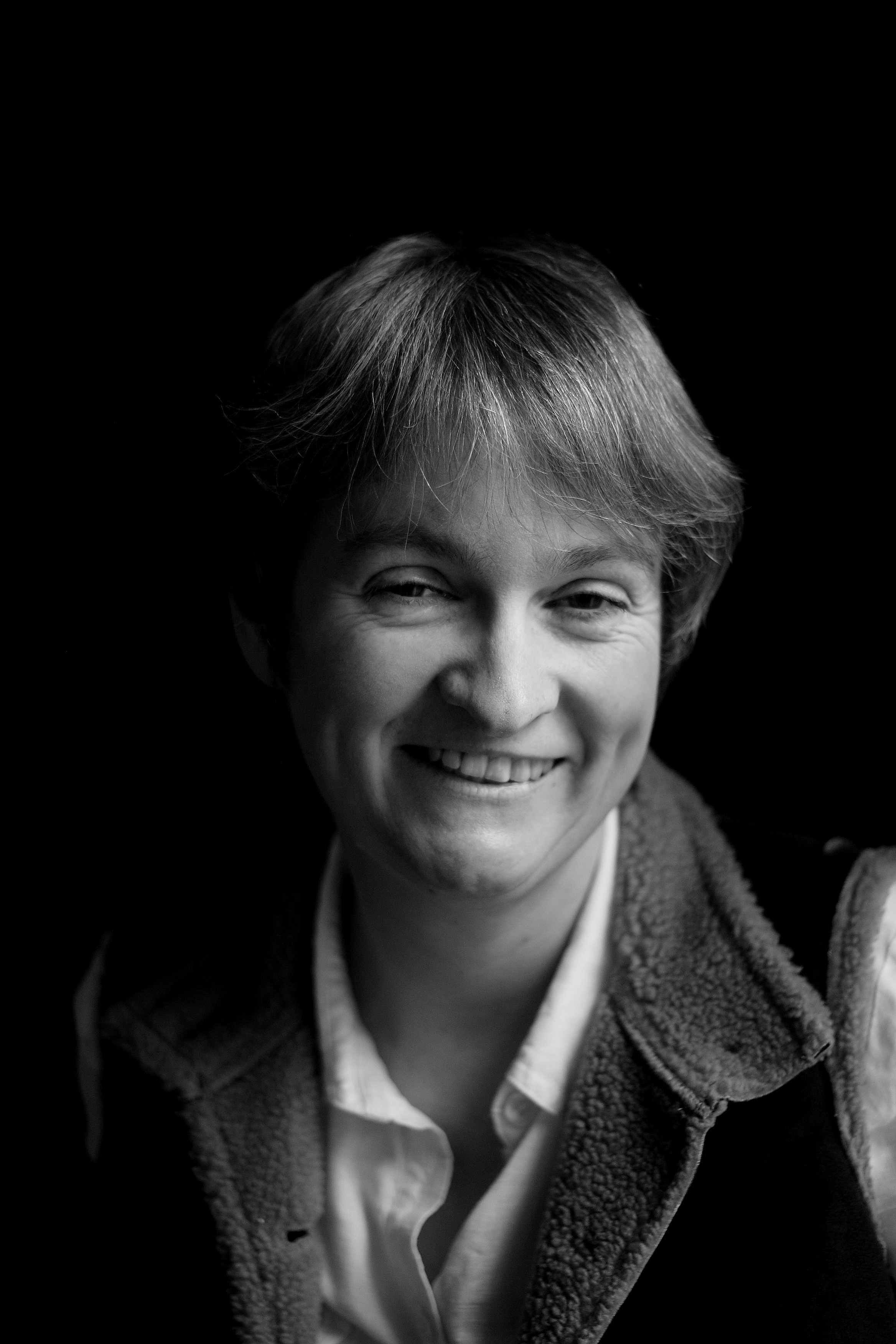Deirdre Madden
Heather Ingman
Deirdre Madden is one of Ireland’s leading authors. In understated, but resonant, prose she returns again and again to themes of memory, identity, the complexity of family relationships, the Troubles in Northern Ireland, and the integrity of the artistic life. Her work has won many prizes and has been widely translated into other languages.
Deirdre Madden was born in 1960 into a Northern Irish Catholic family in Toomebridge, County Antrim, the setting for some of her novels. Her father was a sand merchant, her mother a teacher. The outbreak of the Troubles in the North disrupted what was otherwise a happy childhood spent reading books. Despite the political tensions, a successful school career led her in 1979 to study English at Trinity College Dublin where she has said she felt immediately at home. While still a student, her first short stories were published in The Irish Press by David Marcus, the editor who launched the careers of so many Irish writers. This early success inspired Madden to pursue a Masters in Creative Writing at the University of East Anglia, the springboard for much fine contemporary writing. At UEA, she studied with Malcolm Bradbury and Angela Carter.
On her return to Dublin Madden met and married the poet Harry Clifton and together they embarked on a life outside Ireland, living first in Italy for three years, then London, Switzerland and Germany, and finally in Paris. This experience of living abroad for extended periods is reflected in her novels, several of which are set outside Ireland and reveal an interest in themes of national identity and migration. In 1994 Madden was Writer-in-Residence at University College, Cork and in 1997 she spent a year as Writer Fellow at Trinity College Dublin. Since 2004 Deirdre Madden has been a member of the School of English, TCD where she teaches creative writing.
Drawing on her experience of growing up in Northern Ireland, Deirdre Madden set her first novel, Hidden Symptoms (1986), in Belfast during the Troubles. Madden portrays Belfast as a city paralyzed by hatred and fear and underlines the difficulty of escaping from sectarian divisions. Twenty-two-year-old Theresa has been traumatized by the random sectarian killing of her twin brother Francis two years previously and she is unable to move beyond this. She retains her Catholic faith but refuses to be comforted by it. Her mental paralysis is paralleled by that of the introverted city in which she lives and the novel presents little hope of escape from the city’s warring ideologies. Theresa tells the escapist intellectual, Robert, that abandoning his faith makes no difference, he will always be labelled Catholic: ‘If you think that you can escape tribal loyalty in Belfast today you’re betraying your people and fooling yourself’ (Madden 1988, 46). For some critics the novel provided ‘a bleak unrelenting vision’ (Smyth 1996, 117). Others, like Michael Parker, felt that Hidden Symptoms accurately portrayed life in Belfast during the Troubles, placing the emphasis less on political events than on their ramifications for individuals’ lives. In his lengthy analysis Parker usefully draws attention to the psychological, aesthetic and spiritual themes in the novel, all themes that were to become a hallmark of Madden’s later fiction. Recognition of the novel’s literary merits came when it won the Rooney Prize for Irish Literature in 1987.
Deirdre Madden’s chilling second novel, The Birds of the Innocent Wood (1988), won the Somerset Maugham Award in 1989. It employs Jacobean horror to depict the buried traumas and repressions of family life in rural Ireland that echo down the generations to cause deep depressions, confusions of identity and tensions between sisters. The novel is memorable for its poetic evocation of the Irish countryside and for the development of what was to become one of the most distinctive aspects of Madden’s fictional method, that of maintaining the reader’s interest through gradual revelations about her characters’ inner states of mind. This painstaking method of invoking slight shifts in consciousness requires from her readers correspondingly careful attention.
Remembering Light and Stone (1992) draws on Madden’s experience of living in Italy but retains the link to Ireland through its heroine, Aisling, who is in flight from traumatic memories of a childhood with a violent father. In keeping with Madden’s characteristic trait of evoking rather than explaining, the reader is given few precise details about Aisling’s past, but it is clear that she remains haunted by the psychic violence that she associates with the landscape of her native region, the Burren. With a sense of relief, she settles in the small town of S. Giorgio in Umbria and proceeds to embrace Italian culture, altering her behaviour and even her appearance to such an extent that she finds herself unrecognizable in old photographs from Ireland. In the end, what is more significant than anything Aisling learns about Italy, is the way in which living in a foreign culture begins the healing process which gradually leads her back to Ireland. Though the novel registers, through the character of Maria, significant reservations about the value of a perpetually cosmopolitan lifestyle, in Italy Aisling finds the necessary separation from Ireland to allow her to remember the past without becoming engulfed by it. Those complacent few who never move from their home town also come in for criticism and at least one commentator observed that the tensions around cosmopolitanism versus rootedness in Remembering Light and Stone reflected general anxieties around national identity in Ireland provoked by increasing globalization (White 1999, 451-60).
Nothing is Black (1994) foreshadows Madden’s later novel, Authenticity, in its exploration of the tension between the pressures of materialism in contemporary Ireland and the integrity necessary for the artistic life. The cost and uncertain rewards of living out an artistic vocation are portrayed in the asceticism of Claire’s life as a painter in Donegal while Claire’s more materialistic cousin, Nuala, finds consumerism empty compensation for the loss of her mother. In this short novel, Madden raises a number of important themes concerning memory and the complexities of the mother-daughter relationship that she will return to in greater depth in later novels.
Madden once said in an interview: ‘Ireland is what I understand best’ (Madden 1996, 157). One by One in the Darkness (1996) reprises the theme of the Troubles ten years on from Hidden Symptoms, ending just before the first IRA ceasefire. It is the novel by Madden that to date has attracted the most critical attention, winning the Kerry Book of the Year award and being shortlisted for the Orange Prize. Like the earlier novel, One by One in the Darkness is noteworthy for focusing on the impact of the violence on private lives, in this case the Quinn sisters, members of an ordinary Catholic family living in rural Northern Ireland. The novel moves in alternate chapters between the 1960s when the Quinn sisters were growing up and their adult lives in the 1990s with a clarity that facilitates even a non-Irish reader’s understanding of the sequence of political events from the growth of the civil rights movement, the arrival of the British Army and the beginning of internment.
One by One in the Darkness draws on Deirdre Madden’s experience of growing up during the Troubles and of families trying to carry on with ordinary life amidst the bomb scares, the security checkpoints, and the army patrols. This ordinary life is traced though the childhood and adolescence of the three Quinn sisters, Helen, Cate and Sally, and the traumatic impact on them of their father’s murder at the hands of loyalist paramilitaries. The novel goes back into the past to trace the childhood of the sisters’ mother, Emily, already overshadowed, even before the Troubles, by the pressures of living as a member of a minority in Northern Ireland. By taking an ordinary Catholic rural family as her subject Madden emphasises the way in which the political situation gradually impinged on daily life in Northern Ireland. Even the girls’ father Charlie, a tolerant Catholic who opposes militant republicanism, becomes increasingly politicized. After his death, home becomes a haunted place for all four women.
The sisters react to the Troubles in different ways. Cate escapes to the glamorous world of London fashion magazines. In depicting the insecurity and sense of impermanence that underlie the outward glamour of Cate’s London life, Madden indicates the way in which economic globalization can abstract the self from place and community. After Charlie’s death, Cate’s London life comes to seem like an illusion, which she attempts to counter by having a baby, feeling that at least this will be something solid. At the same time she recognizes that her conservative mother Emily will have difficulty coming to terms with a pregnancy outside marriage.
The life of Cate’s elder sister, Helen, has been deformed by the pressure on her, as a member of the Catholic minority, to get a good education and do something to help her people. The two nuns at Helen’s convent school give her differing advice: Sister Benedict urges her to choose a wider future outside Northern Ireland, while Derry-born Sister Philomena convinces her that Northern Ireland needs educated Catholic leaders. Helen becomes a Belfast lawyer specializing in terrorist cases, working out of the Falls Road, and her life, as Sister Benedict predicted, is increasingly grim. The third sister, Sally, whose life has been taken over by their mother, remains at home and works as a primary school teacher. Despite the apparent narrowness of her life Sally is the sister who, drawing on the emotional intelligence developed through her close bond with Emily, helps the family through the crisis provoked by Cate’s pregnancy.
Critics such as Jayne Steel (2004), Michael Parker (2000) and Elmer Kennedy-Andrews (2003) have pointed to the way in which the novel’s seemingly flat, realist narrative tone is disrupted by postmodernist features reflecting, as in Hidden Symptoms, the non-linear process of coming to terms with grief. The four women’s dreams and visions, expressing more than they are able to articulate in language, register a subconscious protest against the constraints of the political circumstances in which they are trapped. There are moments of consolation in the novel, chiefly centred on the sisters’ warm relations with family and friends, and Jerry White sees this novel as moving towards a more optimistic tone (White 1999, 460). Nevertheless One by One in the Darkness ends, like Hidden Symptoms, on a vision of bleakness with Helen imagining the moment of her father’s death against the backdrop of a dark and lonely universe. Madden commented in an interview: ‘I think we’ve barely started to understand how terrible the Troubles were’ (The Irish Times August 1, 2008, 16).
Deirdre Madden has always been interested in exploring the life of the artist and the difficulty of remaining true to one’s vocation. Reflections on the paintings and frescoes she encounters in Italy play a central part in Aisling’s healing process in Remembering Light and Stone. In Hidden Symptoms, in contrast to Robert’s dilettantish approach, Theresa looks on art as a calling akin in seriousness and commitment to the religious life and having as goals truth and authenticity. Madden picks up this theme in Authenticity (2002) where she examines the artistic vocation as an ethical choice through the grief of the middle-aged William for his unlived life. In the lives of Roderic, an established painter, and Julia, just embarking on her artistic career, Madden portrays the costs but also the joys of the authentically lived life. Throughout his drunken episodes and failed relationships, Roderic remains true to his gift in contrast to William who has never had the courage of his. A constant theme of Madden’s work is how easy, and dangerous, it is to drift into social conformity and the unrealised lives that result. Authenticity marks the beginning of a change of pace in Madden’s fiction towards a greater expansiveness and complexity. Reviewing this novel, Justine Ettler called it ‘a pitch-perfect depiction of the reality of the artistic life’ (The Observer 6 October 2002).
Molly Fox’s Birthday (2008), short listed for the Orange Prize, reprises the exploration of professional vocations against a general background of meditation on human identity. The unnamed narrator, a playwright, uses the birthday of her friend, Molly Fox, whose house she has borrowed, to reflect on the lives of herself and her two friends, Molly, an actor and Andrew, an art historian. In the course of this, the narrator is forced to ask herself questions about how well we know both ourselves and other people. It is a book, Jeannie Vanasco has commented, ‘so honestly told that it feels less like fiction than personal revelation’ (The New York Times 21 May 2010). Molly Fox’s Birthday is about theatre and about role playing. Molly is not the only actor in the novel: both Andrew and the narrator have found that their unswerving commitment to their vocations has led them away from their families and their original identities in order to become the people they needed to be. They share a Northern Irish background, albeit from different sides of the sectarian divide, and the Troubles briefly feature in the story of the involvement of Andrew’s elder brother, Billy, with loyalist paramilitaries. The narrator’s brother, Tom, a Catholic priest sympathetically portrayed, provides another strand in the novel’s exploration of role playing and the cost and rewards of a vocation. As in Authenticity, the value of worldly success is questioned, the story of Molly’s brother, Fergus, suggesting that a life regarded in social terms as a failure may be at least as admirable as a life filled with spectacular achievements.
Time Present and Time Past (2013) is, as the title suggests, a meditation on time and memory. The speed of life during the Celtic Tiger years alarms Fintan, reflecting the way the sudden boom in the Irish economy temporarily transformed Dublin from a sleepy city into one at the forefront of European prosperity. Fintan begins to wish for time to slow down or even stop for a moment. He experiences strange, hallucinatory states when he seems to slip through time to the past or into the future. Connected with this is Fintan’s growing interest in early colour photography and the way in which it may distort or reveal the past. Time Present and Time Past thus completes a trilogy of novels by Madden exploring the arts. The past intrudes into the present in the shape of the Troubles, always present at the edge of the characters’ consciousness, and by the end of the novel the seeds of the future unraveling of Ireland’s prosperity are apparent to some of the more perceptive characters.
Deirdre Madden is also the author of three books for children: Snakes’ Elbows (2005), Thanks For Telling Me, Emily (2007) and Jasper and the Green Marvel (2011). Thanks For Telling Me, Emily is a delightful story for children who like animals, magic and animals doing magic. Snakes’ Elbows won the Eilís Dillon award for an outstanding first book for children and garnered much praise from critics. The sequel, Jasper and the Green Marvel, continues the story of sneaky Jasper Jellitt. Running through these apparently lighthearted tales is more serious subject matter that chimes in with themes in Madden’s adult novels, namely the corruption of riches, the perils of fame and the distortions of the media. In interviews Madden has said she enjoys writing for children and indeed sees all writing as less an intellectual than an artisan activity, akin to shaping a pot or weaving a rug.
The clarity and understated lyricism of Deirdre Madden’s writing has attracted praise from fellow authors of the calibre of Richard Ford, Sebastian Barry, and Anne Enright. Writing in The Daily Telegraph Adam O’Riordan commented: ‘For almost thirty years, Irish writer Deirdre Madden has published novels of quiet and subtle brilliance’ (6 June 2013). The subtle quality of her writing requires an equally perceptive response from her readers. Such is her accuracy as a writer that to read one of Madden’s novels is less like reading fiction than to experience life unfolding. Her widely acknowledged skill as a novelist and her insightful observations on themes as universal as violence, integrity, family relationships and friendship ensure that her work will endure and continue to attract new readers.
Cite as: ‘Deirdre Madden’ by Heather Ingman at https://www.tcd.ie/trinitywriters.
First published January 2016.
Works Cited
- Higgins, Geraldine. ‘“A Place to Bring Anger and Grief”: Deirdre Madden’s Northern Irish Novels’. Writing Ulster 6, 1999: 142-61.
- Kennedy-Andrews, Elmer. Fiction and the Northern Ireland Troubles since 1969: (de-) constructing the North. Dublin: Four Courts Press, 2003. 151-61.
- Madden, Deirdre. Hidden Symptoms. London: Faber, 1988.
------. Interview with Shirley Kelly, in Books Ireland 196 (Summer, 1996): 157.
- Parker, Michael. ‘Shadows on a Glass: Self-Reflexivity in the Fiction of Deirdre
Madden’. Irish University Review 30 (1), 2000: 82-192.
------. Northern Irish Literature 1975-2006. New York and London: Palgrave Macmillan, 2007.
- Smyth, Gerry. The Novel and the Nation: Studies in the New Irish Fiction. London: Pluto Press, 1996.
- Steel, Jayne. ‘Politicizing the private: women writing the Troubles’. In Representing the Troubles: Texts and Images, 1970–2000, ed. Brian Cliff and Éibhear Walshe. Dublin: Four Courts Press, 2004. 55–66.
- White, Jerry. ‘Europe, Ireland, and Deirdre Madden’. World Literature Today 73 (3),1999: 451-60.
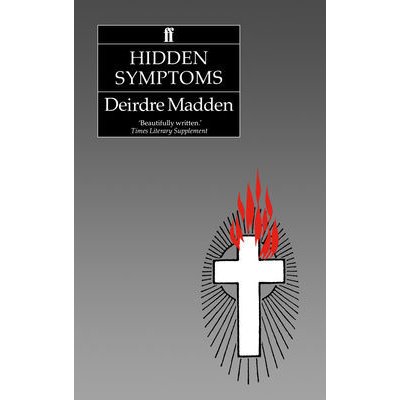 Deirdre Madden, Hidden Symptoms (1986)
Deirdre Madden, Hidden Symptoms (1986)
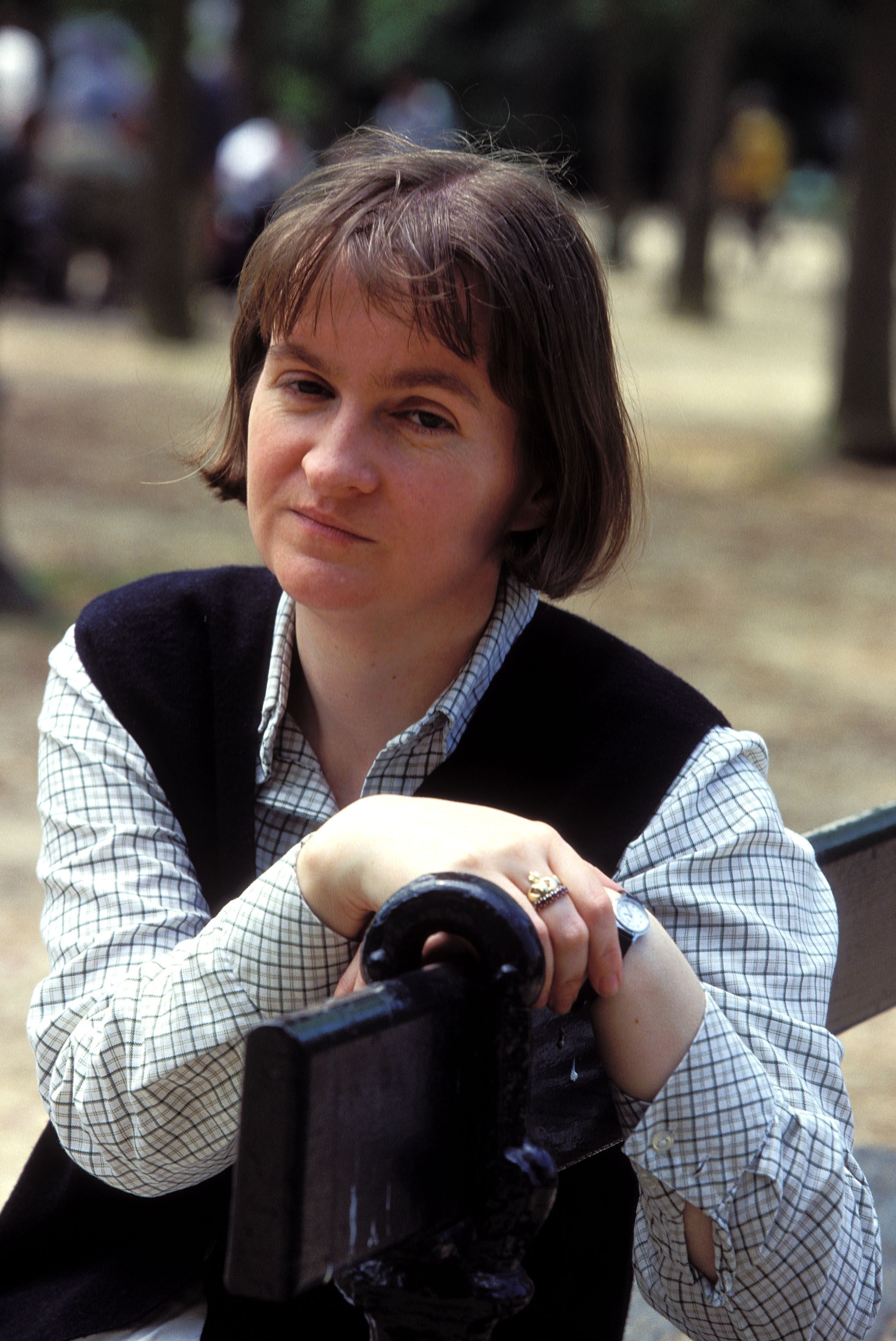 Deirdre Madden photographed in Paris June 4 1996. Photograph by Frederic Reglain.
Deirdre Madden photographed in Paris June 4 1996. Photograph by Frederic Reglain.
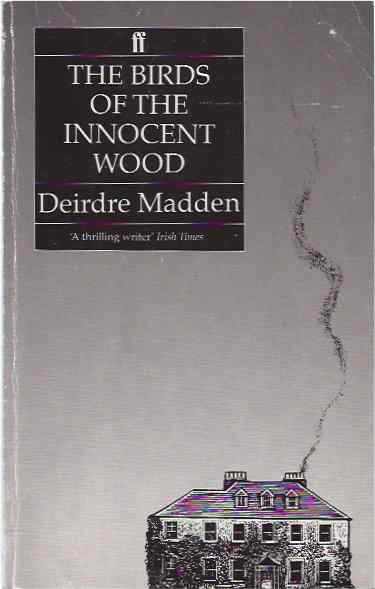
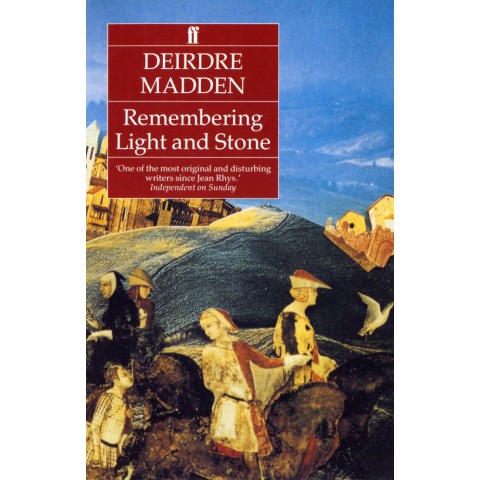 Deirdre Madden, Remembering Light and Stone (1992)
Deirdre Madden, Remembering Light and Stone (1992)
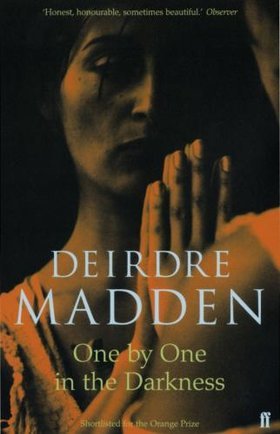 Deirdre Madden, One by One in the Darkness (1996)
Deirdre Madden, One by One in the Darkness (1996)
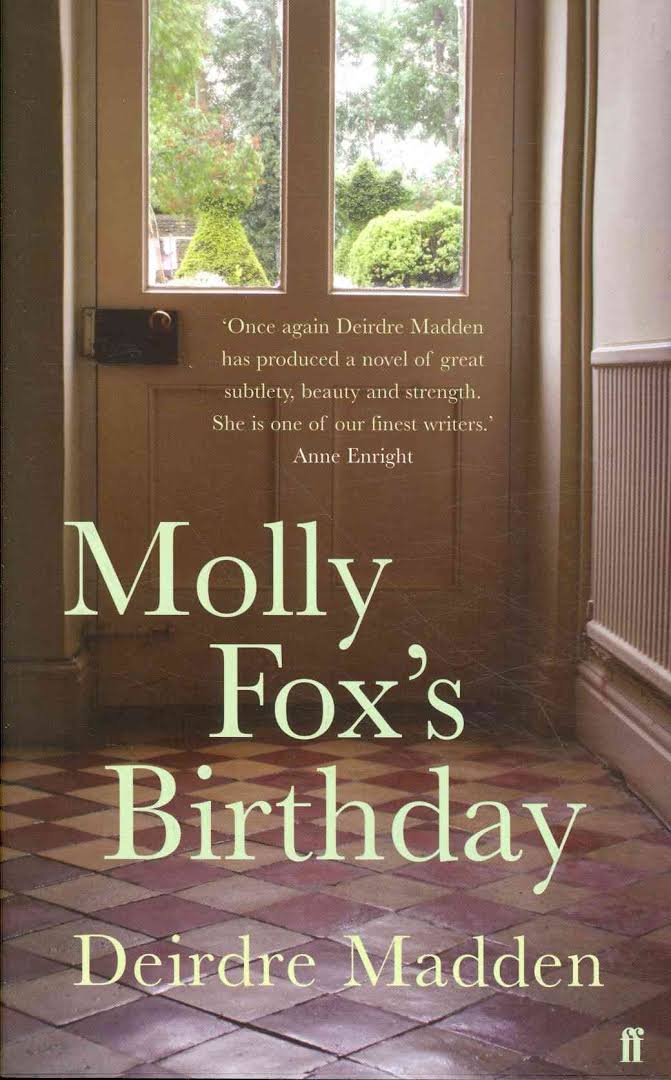 Deirdre Madden, Molly Fox’s Birthday (2008)
Deirdre Madden, Molly Fox’s Birthday (2008)
 Deirdre Madden, Jaspar and the Green Marvel (2011)
Deirdre Madden, Jaspar and the Green Marvel (2011)


